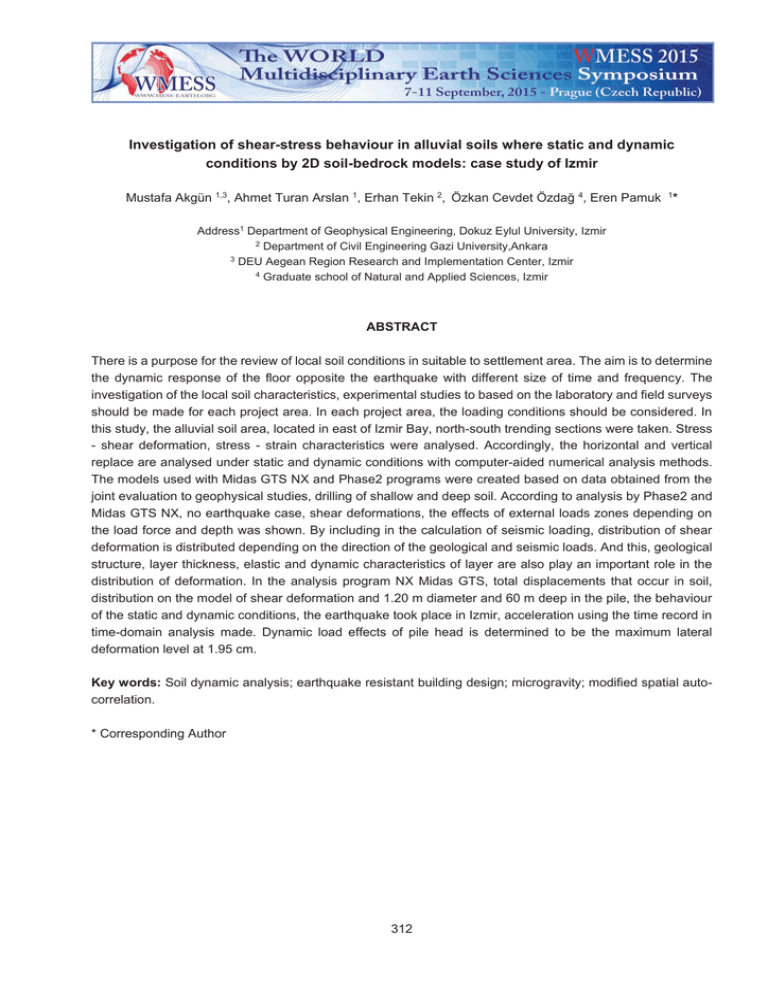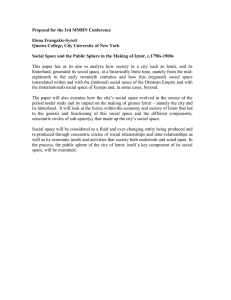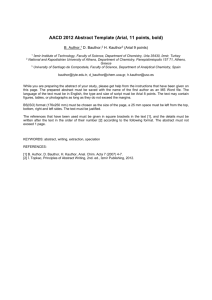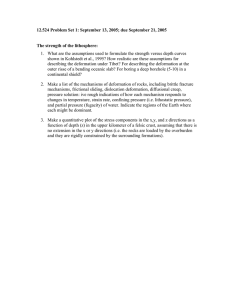Investigation of shear-stress behaviour in alluvial soils where static
advertisement

Investigation of shear-stress behaviour in alluvial soils where static and dynamic conditions by 2D soil-bedrock models: case study of Izmir Mustafa Akgün 1,3, Ahmet Turan Arslan 1, Erhan Tekin 2, Özkan Cevdet Özdağ 4, Eren Pamuk 1* Address1 Department of Geophysical Engineering, Dokuz Eylul University, Izmir 2 Department of Civil Engineering Gazi University,Ankara 3 DEU Aegean Region Research and Implementation Center, Izmir 4 Graduate school of Natural and Applied Sciences, Izmir ABSTRACT There is a purpose for the review of local soil conditions in suitable to settlement area. The aim is to determine the dynamic response of the floor opposite the earthquake with different size of time and frequency. The investigation of the local soil characteristics, experimental studies to based on the laboratory and field surveys should be made for each project area. In each project area, the loading conditions should be considered. In this study, the alluvial soil area, located in east of Izmir Bay, north-south trending sections were taken. Stress - shear deformation, stress - strain characteristics were analysed. Accordingly, the horizontal and vertical replace are analysed under static and dynamic conditions with computer-aided numerical analysis methods. The models used with Midas GTS NX and Phase2 programs were created based on data obtained from the joint evaluation to geophysical studies, drilling of shallow and deep soil. According to analysis by Phase2 and Midas GTS NX, no earthquake case, shear deformations, the effects of external loads zones depending on the load force and depth was shown. By including in the calculation of seismic loading, distribution of shear deformation is distributed depending on the direction of the geological and seismic loads. And this, geological structure, layer thickness, elastic and dynamic characteristics of layer are also play an important role in the distribution of deformation. In the analysis program NX Midas GTS, total displacements that occur in soil, distribution on the model of shear deformation and 1.20 m diameter and 60 m deep in the pile, the behaviour of the static and dynamic conditions, the earthquake took place in Izmir, acceleration using the time record in time-domain analysis made. Dynamic load effects of pile head is determined to be the maximum lateral deformation level at 1.95 cm. Key words: Soil dynamic analysis; earthquake resistant building design; microgravity; modified spatial autocorrelation. * Corresponding Author 312



